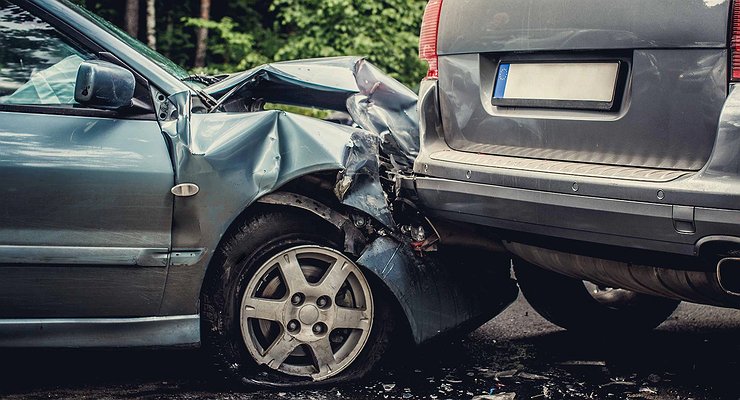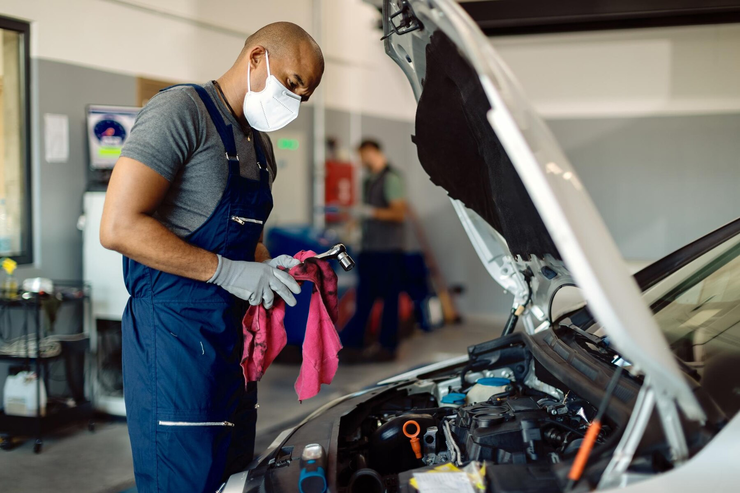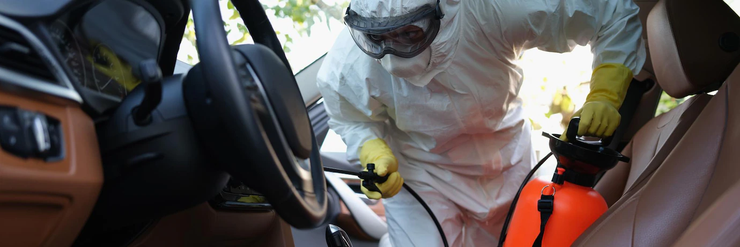Malfunctions in a passenger car usually have some side effects in the form of vibrations, sounds and smells. This allows experienced drivers to successfully diagnose most problems using hearing, smell and tactile sensations. The problem is that people who have been sick with the “crown” have problems with this. Portal “AutoVzglyad” deals with the situation.
Every car owner should be able to quickly diagnose the condition of his car. Of course, we are not talking about in-depth studies of the components and assemblies, as this now requires special tools and advanced knowledge. But even at the level of sensations, a person can diagnose his “iron friend” and decide on further actions. Ignore problems or call technical assistance immediately.
What feelings are we talking about? About sounds, smells and vibrations. In addition, they are quite unique for each t/s node. Therefore, it is quite easy for an experienced driver to identify the cause of the problems. Let’s start with sounds. Knocking and clicking in the lower part of the car often indicate mechanical damage to the suspension elements. A hum that varies in tone with speed can be a clear sign of bearing failure.
Uncharacteristic noises in the form of a rattling, especially during braking, indicate critical wear of the brake discs or pads or small stones in the brake mechanism. Whistling in the engine compartment area, as a rule, is associated with a malfunction of the bearings of engine mounts or drive belt rollers. Also, unusual low knocks indicate problems with the crankshaft and high knocks with valves. The howling of the gearbox is a signal that, for example, there is not enough oil in it, or the “automatic” for some reason cannot get over the desired gear.
Vibrations. They are made by the moving parts of your car. And they can be caused by an imbalance of the wheels, the cardan shaft, the disappearance of a spark in one of the cylinders, the curvature of the rim. As a rule, vibrations are directly related to the speed of the vehicle.
And finally, smells. Besides air freshener, what can smell in a car? Yes everything! You must be able to distinguish the smell of overheated brake pads, hot engine and transmission oil, antifreeze, windshield washer fluid. And even the smell of brakes. If the smell of these technical fluids appears in the cabin, you’re in trouble! But that is not everything.
Modern cars are oversaturated with various electronic components, which means that the risk of their failure is high. Often this is accompanied by a burnout of the wiring. And you should also be able to distinguish the distinctive smell of out-of-control electricity. There is also plastic, which can melt, and gasoline, which can leak. And exhaust fumes, the smell of which in the cabin suggests that the exhaust system has long been retired and suffers from incontinence. It would seem that everything is simple. We smell, listen, observe and analyze.
The problem is that the coronavirus pandemic has affected a large number of people. Moreover, the age category to which the drivers belong has the most problems. According to experts, the side effects of this infection include a decrease in hearing, smell, and touch. That is, in the event of problems with your car, you may simply not feel them.
In addition, there is evidence that the “crown” affects brain efficiency. That’s really bad. After all, we have repeatedly said that a person can drive correctly and safely through the conscious use of the intellect. And if you can’t physically quickly and objectively assess the level of usability of your car, driving becomes a dangerous lottery.
Therefore, you should be especially careful and careful when driving a vehicle if you have been sick with the “crown”. In any case, before each ride, it is necessary to visually assess whether there are no leaks of technical fluids, the condition of the wheels and brakes. And while driving, pay attention to the readings of instruments related to the technical condition of the car.
Every car owner should be able to quickly diagnose the condition of his car. Of course, we are not talking about in-depth studies of the components and assemblies, as this now requires special tools and advanced knowledge. But even at the level of sensations, a person can diagnose his “iron friend” and decide on further actions. Ignore problems or call technical assistance immediately.
What feelings are we talking about? About sounds, smells and vibrations. In addition, they are quite unique for each t/s node. Therefore, it is quite easy for an experienced driver to identify the cause of the problems. Let’s start with sounds. Knocking and clicking in the lower part of the car often indicate mechanical damage to the suspension elements. A hum that varies in tone with speed can be a clear sign of bearing failure.
Uncharacteristic noises in the form of a rattling, especially during braking, indicate critical wear of the brake discs or pads or small stones in the brake mechanism. Whistling in the engine compartment area, as a rule, is associated with a malfunction of the bearings of engine mounts or drive belt rollers. Also, unusual low knocks indicate problems with the crankshaft and high knocks with valves. The howling of the gearbox is a signal that, for example, there is not enough oil in it, or the “automatic” for some reason cannot get over the desired gear.
Vibrations. They are made by the moving parts of your car. And they can be caused by an imbalance of the wheels, the cardan shaft, the disappearance of a spark in one of the cylinders, the curvature of the rim. As a rule, vibrations are directly related to the speed of the vehicle.
And finally, smells. Besides air freshener, what can smell in a car? Yes everything! You must be able to distinguish the smell of overheated brake pads, hot engine and transmission oil, antifreeze, windshield washer fluid. And even the smell of brakes. If the smell of these technical fluids appears in the cabin, you’re in trouble! But that is not everything.
Modern cars are oversaturated with various electronic components, which means that the risk of their failure is high. Often this is accompanied by a burnout of the wiring. And you should also be able to distinguish the distinctive smell of out-of-control electricity. There is also plastic, which can melt, and gasoline, which can leak. And exhaust fumes, the smell of which in the cabin suggests that the exhaust system has long been retired and suffers from incontinence. It would seem that everything is simple. We smell, listen, observe and analyze.
The problem is that the coronavirus pandemic has affected a large number of people. Moreover, the age category to which the drivers belong has the most problems. According to experts, the side effects of this infection include a decrease in hearing, smell, and touch. That is, in the event of problems with your car, you may simply not feel them.
In addition, there is evidence that the “crown” affects brain efficiency. That’s really bad. After all, we have repeatedly said that a person can drive correctly and safely through the conscious use of the intellect. And if you can’t physically quickly and objectively assess the level of usability of your car, driving becomes a dangerous lottery.
Therefore, you should be especially careful and careful when driving a vehicle if you have been sick with the “crown”. In any case, before each ride, it is necessary to visually assess whether there are no leaks of technical fluids, the condition of the wheels and brakes. And while driving, pay attention to the readings of instruments related to the technical condition of the car.
Source: Avto Vzglyad
Donald Salinas is an experienced automobile journalist and writer for Div Bracket. He brings his readers the latest news and developments from the world of automobiles, offering a unique and knowledgeable perspective on the latest trends and innovations in the automotive industry.















